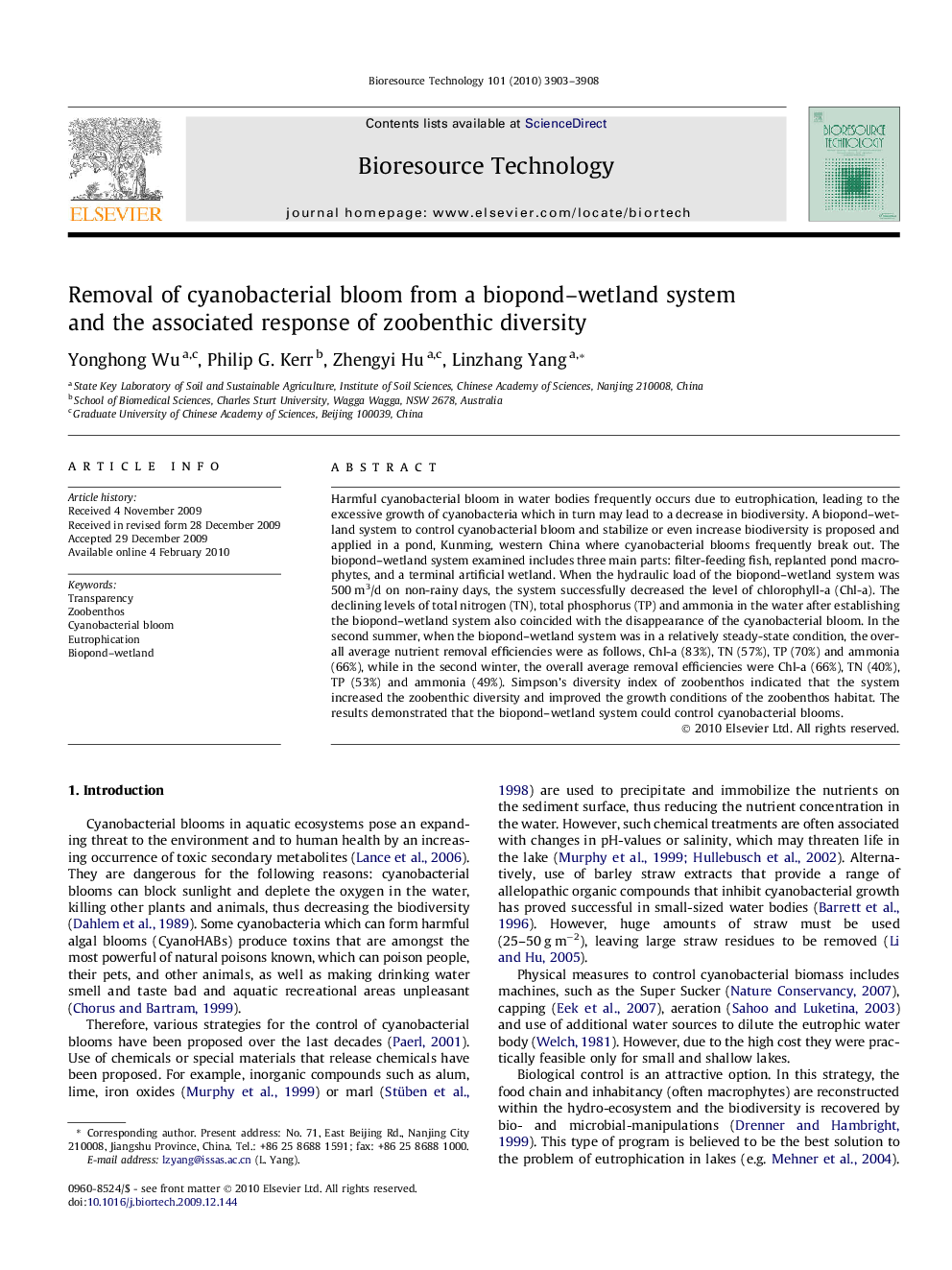| Article ID | Journal | Published Year | Pages | File Type |
|---|---|---|---|---|
| 683536 | Bioresource Technology | 2010 | 6 Pages |
Harmful cyanobacterial bloom in water bodies frequently occurs due to eutrophication, leading to the excessive growth of cyanobacteria which in turn may lead to a decrease in biodiversity. A biopond–wetland system to control cyanobacterial bloom and stabilize or even increase biodiversity is proposed and applied in a pond, Kunming, western China where cyanobacterial blooms frequently break out. The biopond–wetland system examined includes three main parts: filter-feeding fish, replanted pond macrophytes, and a terminal artificial wetland. When the hydraulic load of the biopond–wetland system was 500 m3/d on non-rainy days, the system successfully decreased the level of chlorophyll-a (Chl-a). The declining levels of total nitrogen (TN), total phosphorus (TP) and ammonia in the water after establishing the biopond–wetland system also coincided with the disappearance of the cyanobacterial bloom. In the second summer, when the biopond–wetland system was in a relatively steady-state condition, the overall average nutrient removal efficiencies were as follows, Chl-a (83%), TN (57%), TP (70%) and ammonia (66%), while in the second winter, the overall average removal efficiencies were Chl-a (66%), TN (40%), TP (53%) and ammonia (49%). Simpson’s diversity index of zoobenthos indicated that the system increased the zoobenthic diversity and improved the growth conditions of the zoobenthos habitat. The results demonstrated that the biopond–wetland system could control cyanobacterial blooms.
